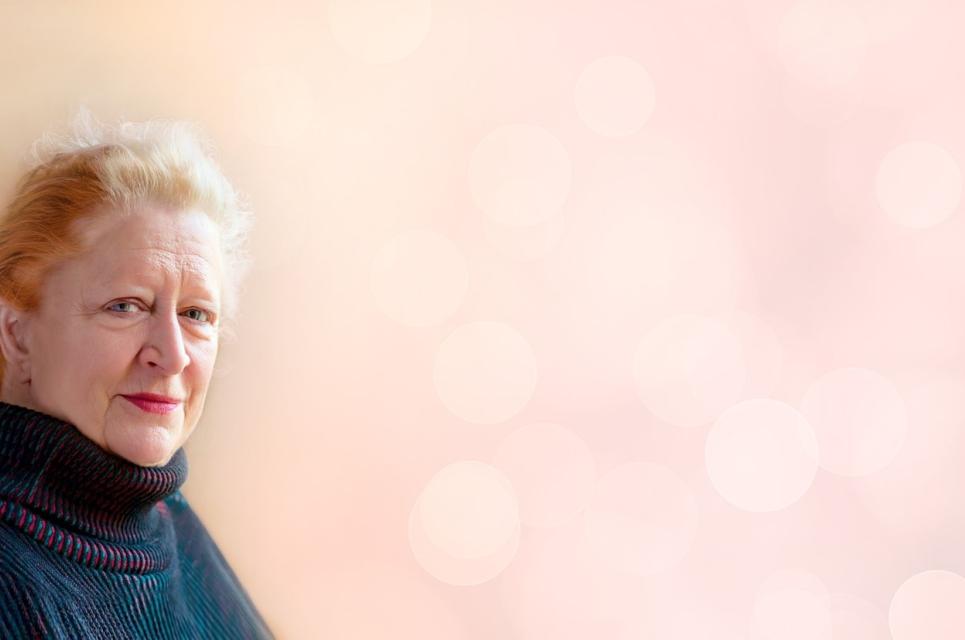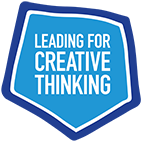CREATIVE LEARNING: Not an extra, a requirement
Margaret Heffernan is a Professor of Practice at the University of Bath and, through Merryck & Co., mentors CEOs and senior executives of major global organizations. In 2023 Margaret was inducted into the Thinkers50 Hall of Fame for her lasting contribution to management thinking. She is a frequent broadcaster on BBC Radio 4 and the author of many broadcast plays.

Last spring, I was in Oxford talking to a group of senior executives about how their organisations would adjust to an unpredictable world. As prediction and foresight becomes more difficult, leadership is no longer just about expert planning and precise management. Today’s entrenched complexity demands a greater capacity for creative thinking, to be able to respond and adapt to circumstances that can’t be planned for. This isn’t an option; it is already a necessity. If they hadn’t known it before, the pandemic persuaded them.
There was just one problem. Their highly credentialed workforce wasn’t up to it. Asked to do, or think about, something they’d never seen or imagined before, their employees were paralyzed and needy. To the frustration of their bosses, they didn’t want to think for themselves; they yearned to be told exactly what to do. ‘My people have no ideas! They’re smart and well educated and have all kinds of qualifications,’ one senior executive complained. ‘But they have no creative thinking at all.’
I see this everywhere. Companies go to huge trouble and expense to recruit the best qualified people they can find but what they get, by and large, are obedient followers: excellent at following precise instructions, but incapacitated when asked to think for themselves. Trained to compete—for grades, prizes, places—they’re frequently loners, poor at asking for, or giving help.
There are many culprits: hierarchy implicitly makes people seek approval from above; it also reinforces rivalry. Bureaucracy teaches them to follow rules. Incentives (money, grades, promotions) mess with peoples’ minds and has been shown to stifle creativity [1]. But the rot sets in earlier than employment. It starts at school.
One example: An eight-year-old girl, whose spring break project focused on the Amazon rain forest. Using an old camping tent, she filled a mock-up of the forest with homemade papier mâché animals, birds and plants and added a soundtrack of Amazonian wildlife. The night before school resumed, she planted it on the school lawn, and her peers were enthralled. But she was chastised for being ‘too creative’, marked down because her project didn’t contain enough text. Everyone else knew the drill—their higher marks were for cutting and pasting Wikipedia articles into a binder.
But she had fallen foul of criterion-based assessment, assessing a student’s work by comparing it to a set of pre-determined standards and criteria. Assigning no value to creativity, it merely measures how far the student matches what someone somewhere has defined as the right answer. The process doesn’t develop or encourage creative thinking. It was designed to be fair, but in reality, is a recipe for second-guessing. No wonder employers are so frustrated—as are the confused young hopefuls they hire. And yet to address the many crises and challenges we face; we need creativity now more than ever. Instead of trivializing or denigrating it as infantile, impractical and unnecessary, it’s time to acknowledge that it lies at the heart of all innovation, problem solving, and effective leadership.
But championing the arts in the U.K. has been a long, dispiriting and frustrating cause over the last ten to fifteen years. Cuts in funding and the exclusion of arts subjects from the EBacc are just two reasons that might explain the precipitate drop in students studying the creative arts. But the most telling indicator of marginalization was when, in 2022, for the first time, PISA (Programme for International Student Assessment) set out to measure how far schools were developing creative thinking, which was defined as “the ability to generate, evaluate and improve ideas to produce original and effective solutions, advance knowledge and create impactful expressions of imagination” [i]. Why measure creative thinking? Because it “can have a positive influence on students’ academic interest and achievement, identity and socio-emotional development” and because that capacity is fundamental to “the investigation of issues, problems or society-wide concerns” [ii]. But the United States and United Kingdom opted out of this assessment. Creative thinking? They didn’t want to know. (Singapore came top of the PISA list; Korea, Canada, Australia, New Zealand, Estonia and Finland followed, in descending order.)
What is it that creative minds do that makes them so essential now? Instead of sticking to pre-determined paths, they let their minds wander wherever curiosity takes them; accumulating knowledge and ideas, they become more in tune to the world. They develop the patience to explore what it all means as well as the courage needed to begin to work on something as yet undefined. Novelists like Murakami and Lee Child begin their novels not knowing how the plot works; not for them the need for precise instructions before starting! Having begun, difficulties proliferate, each a problem to be solved. A million-minute decisions are taken as they persevere, never knowing whether their creation will thrive or wither. And the rewards are unknown: when he finished Days Without End, the novelist Sebastian Barry ruefully concluded it would prove unpopular and that he would need to start his next book soon. (In fact, it made Barry the first novelist to win the Costa Prize twice.)
All of this is frightening, uncertain and frequently lonely, so they become great formal or informal collaborators: generous with ideas and support, energizing and expanding each other’s capability, knowing how perilous the work can be—but also how much more fruitful with others.
Frequently, when successful, artists choose to change, abandoning certainty again in favour of further exploration and discovery. Far from the stereotype of the lazy, infantile artist, their plays open on time, exhibitions are efficiently planned, insured and shipped around the world, movies mostly run to budget, orchestras and bands master new technologies and platforms: all without instruction or guarantees.
These are exactly the aptitudes not just that employers seek but that a healthy society requires of citizens, teachers, leaders of all kinds: adaptability, energy, agency, courage, an endless appetite for learning. We really have no idea exactly what jobs and specific skills the future will value and require. What we can be sure of is that everyone will need to be good at learning, at working with others and eager to try new things. And we know that doing so is very good for them [iii]. For young people, daily reading reduces hyperactivity and inattention and develops empathy. The same is true of dance, music or art lessons. Adolescents who participate in book clubs, dance, bands, orchestras develop a greater sense of autonomy and personal growth, are less likely to take up smoking and drinking or become involved in antisocial or criminal activity. Researchers aren’t quite sure why developing their imagination, creativity and problem-solving skills (the everyday life of an artist) has positive benefits but recognize the impact they make: enhancing self-esteem, self-control and giving young people a stronger sense of themselves as actors in their own lives.
The collaborative gifts that the arts develop don’t just improve work. They develop communication but also, by involving more perspectives, engender the capacity to manage conflict, which always lies at the heart of creativity. In addition, innovation does not respect hierarchy or expertise, which is to say that problems are frequently solved by people working outside their domain expertise. So collaboration with a multitude of attitudes and aptitudes amplifies that chance of new, better ideas. And decisions made by a rich cross-section personalities and backgrounds can confer greater legitimacy.
That’s why the battle is on now for British institutions to reinstate the creative arts at every level of education and training, for students, teachers, school heads and policy makers. Not only because of the positive impact of the arts on physical and mental health for people of all ages. Nor just because this sector of the economy generates more income than aerospace, car manufacturing or pharmaceuticals combined. But because every organization (and especially education) needs individuals capable of thinking for themselves, seeing what others don’t, finding solutions where previously there were none, who are comfortable managing conflict and working with people different from themselves, unafraid of change or experimentation and who have an inexhaustible appetite for learning.
[1] Some of the most accessible writing on this topic can be found in Daniel Pink’s excellent book, Drive. https://www.youtube.com/watch?v=u6XAPnuFjJc
[i] https://www.oecd-ilibrary.org/docserver/b3a46696-en.pdf
[ii] https://www.oecd.org/pisa/innovation/creative-thinking/
[iii] FANCOURT D, BONE JK, BU F, MAK HW, BRADBURY A. 2023. The Impact of Arts and Cultural Engagement on Population Health: Findings from Major Cohort Studies in the UK and USA 2017–2022. London: UCL; 2023 March. There is a mountain of research into this subject but this report is an excellent summary.
https://sbbresearch.org/wp-content/uploads/2023/03/Arts-and-population-health-FINAL-March-2023.pdf
Reflecting Together
- Margaret’s article brings us back to consider the purpose of school. How is your school preparing your children and young people to enter an unpredictable world
- How might the arts inspire and influence you as a leader of creative thinking to develop your school as an organisation that has an ‘inexhaustible appetite for learning’?
- How might school, business leaders and artists collaborate together to ignite new approaches to solving the systemic issue of creative incapability?
Dr. Margaret Heffernan
Margaret began her career producing programmes for the BBC before moving to the US where she spearheaded multimedia productions, became a Chief Executive and named one of the "Top 100 Media Executives" by The Hollywood Reporter.
The author of six books, Margaret’s third book, Willful Blindness : Why We Ignore the Obvious at our Peril was named one of the most important business books of the decade by the Financial Times. Her TED talks have been seen by over fifteen million people and in 2015 TED published Beyond Measure: The Big Impact of Small Changes. Her most recent book, Uncharted: How to map the future was published in 2020. It quickly became a bestseller and was nominated for the Financial Times Best Business Book award, was one of Bloomberg’s Best Books of 2021 and was chosen as the "Medium Best of the Best" business book.
Her new book, Embracing Uncertainty: How writers, artists and musicians thrive in an unpredictable world will be published in March 2025 and we’re delighted to share that Margaret will be joining our community meet-up on the 19th March 2025, 4.30pm.
If you would like her to come and talk about her work with your organisation, please visit www.mheffernan.com
